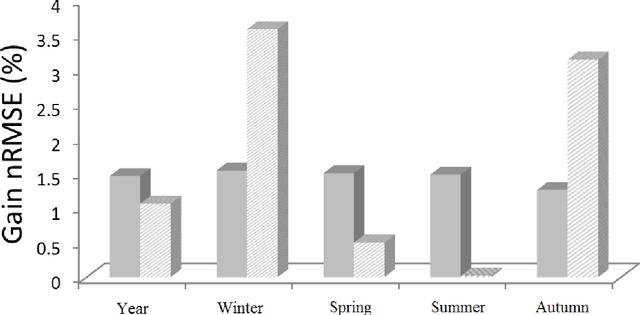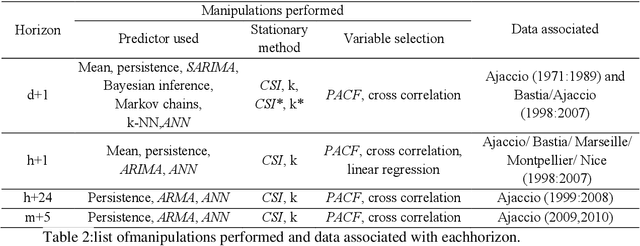Multi-horizon solar radiation forecasting for Mediterranean locations using time series models
Paper and Code
Jul 22, 2013



Considering the grid manager's point of view, needs in terms of prediction of intermittent energy like the photovoltaic resource can be distinguished according to the considered horizon: following days (d+1, d+2 and d+3), next day by hourly step (h+24), next hour (h+1) and next few minutes (m+5 e.g.). Through this work, we have identified methodologies using time series models for the prediction horizon of global radiation and photovoltaic power. What we present here is a comparison of different predictors developed and tested to propose a hierarchy. For horizons d+1 and h+1, without advanced ad hoc time series pre-processing (stationarity) we find it is not easy to differentiate between autoregressive moving average (ARMA) and multilayer perceptron (MLP). However we observed that using exogenous variables improves significantly the results for MLP . We have shown that the MLP were more adapted for horizons h+24 and m+5. In summary, our results are complementary and improve the existing prediction techniques with innovative tools: stationarity, numerical weather prediction combination, MLP and ARMA hybridization, multivariate analysis, time index, etc.
 Add to Chrome
Add to Chrome Add to Firefox
Add to Firefox Add to Edge
Add to Edge